July/August 2013
Save the Last Dance
Romanian Hay & Other Sunshine Stories
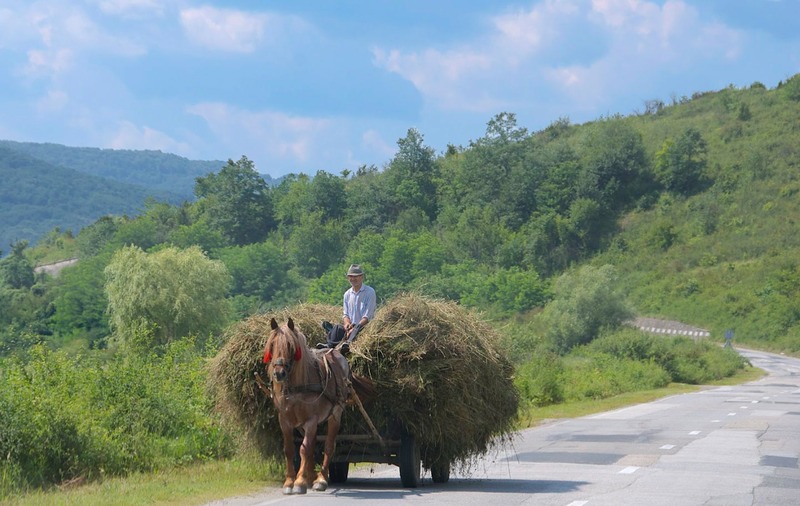
Romania is that once-in-a-while rarity in that when it comes to growing hay it deserves a true Five Star Rating from your traveling scribes. They grow a lot of hay in Romania, and they harvest it in lots of neat ways. The first couple of stars are easy ‘cause nearly everyone gets them; we saw lots of hay in the fields or stacked in barns either in big rolls or in bales, neither of which is worthy of any special comment. Then, there is the loose hay piled up in neatly shaped conical stacks scattered over the fields; these are really cool and ever so evocative. The fourth star comes from the loose hay we saw both stacked in open-sided covered sheds and moving down the road on wagons. This is way cool because this hay is all cut and carted and stacked by hand; no machines involved. Finally, the fifth star is the really special one. This is awarded because the aforementioned wagons, while sometimes pulled by tractors, are much more frequently hauled around by beautiful big horses. This is the ultimate high when it comes to talking about hay because seeing and hearing one of these carts going by, often with the workers riding on top holding their scythes and rakes and pitch forks, is not only a real treat, but is somehow THE most evocative memory of our time in this charming country. This time of year that’s Romania in a nutshell (or haystack, if you prefer). Beautiful, tranquil, and delightful.
* * * * * * *
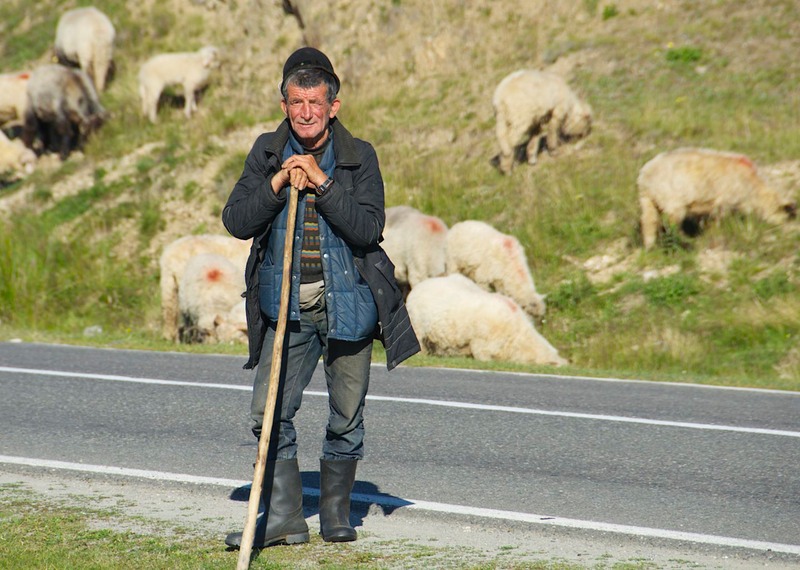
But on to more mundane issues. Last time we wrote we were in western Asia. Just leaving the wilds of the Caucasus Mountains, we were preparing to cross into Turkey, heading back toward civilization. Wha’ happened next? That was in June – so long ago! Well, in brief we crossed back into Turkey from Georgia and drove west, back towards Europe, where we are now and will remain. It was a great run, getting here.
We immediately felt right at home returning to Turkey, of course; we’d spent over 4 months there, starting last fall. Once again we heard muezzins issuing the call to prayer. We were offered çay – and a very welcome car wash – at our first stop for fuel (where we went back to paying nearly $9.00 US per gallon for diesel). Even with the expensive fuel we were happy to be back. Heading up into the mountains, we visited a couple of sites we’d missed earlier, and stopped for a couple of days in Amasya, one of our favorite cities in Turkey. No surprise, it was just as pretty in early summer as it had been last October.
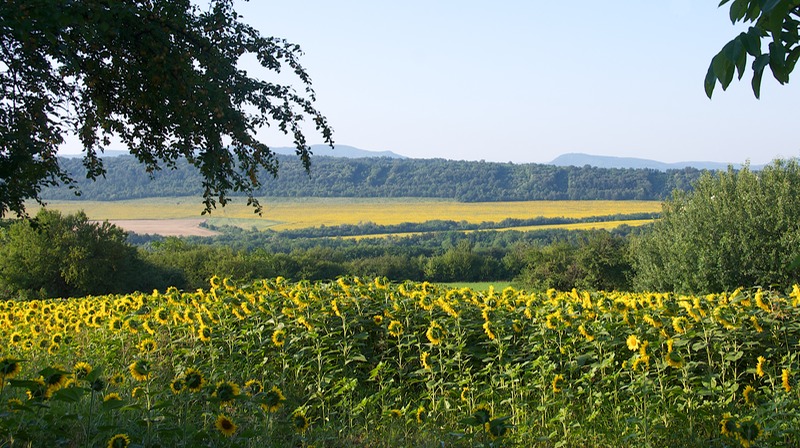
We were making our way west, across Turkey to Bulgaria and it took us about a week to travel the roughly 1200 miles. Turkey is a really big country. It was still green most of the way, in mid-June, particularly while we were up in the mountains. We saw a lot of nice countryside, filled with wildflowers below the snowy peaks, but encountered nothing that knocked our socks off. It was merely a journey to our next destination, Bulgaria. But never fear, we had a good time.
There were plums and apricots and peaches at the roadside stands, along with the ubiquitous melons and tomatoes and cucumbers. Turkey and the rest of that region are far ahead of us as to when fruits and vegetables are ripe. The fields suddenly were filled with sunflowers, a real treat. (Those sunflowers have stayed with us all the way through Bulgaria and into Romania; we are just delighted – they’re just so, so, friendly looking.)
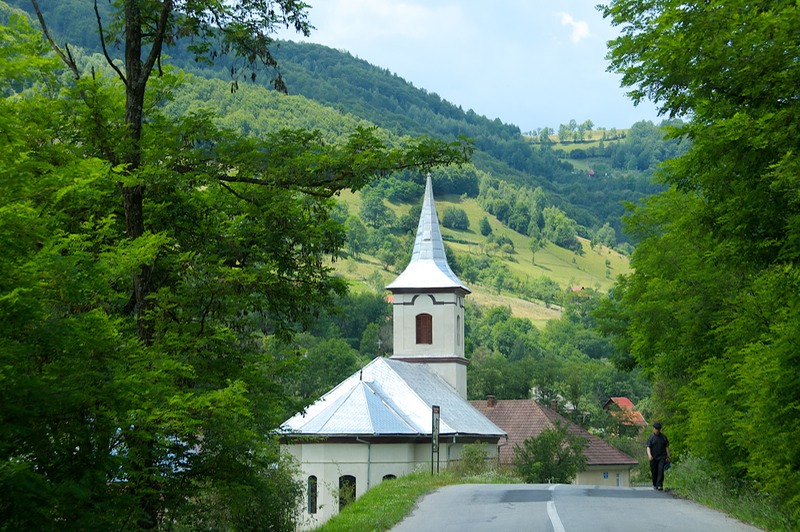
Before we knew it we were bracing for the highways around Istanbul, but the reality was much less difficult than the expectation. This time through, we were not planning to make a stop in the city, and we discovered that the signage was actually quite straightforward, the traffic reasonable, and within an hour we had come and gone across the northern side of the city.
We crossed out of Turkey at the same place we had entered last fall, in the far northwestern corner of the country. We had to pull the Turkish border official away from his newspaper long enough to check us out. He stamped our passports, opened the gate, and sent us on our way. After all these months, the border signage informed us we had left Türkiye; we wandered down a country road back into Bulgurstan.
Having already seen much of Bulgaria in prior years, we headed directly to a great campground we know that’s near the city of Veliko Tarnovo. We’d made friends there on prior visits and between chats we spent 3 weeks getting ourselves ready for our next adventures. We caught our breath, did a zillion loads of laundry (everything got washed at least once!) and cleaned and waxed the coach. Rick saw the dentist, I got new glasses, and the Tiger at long last had its carpet replaced with linoleum.
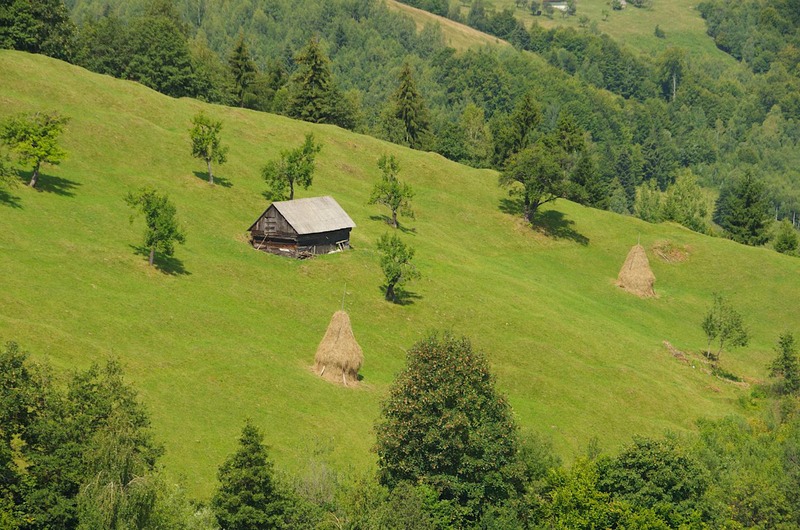
We made new friends of a couple (he’s from South Africa, she’s English) who were helping with campground duties for the summer. They will be heading into Turkey in the fall, so we shared travel advice with them; they reciprocated by giving us some good info on wintertime in Sicily, a scenario we are exploring.
We finally completed our chores, kicked ourselves out of the campground and made our way towards a ferry across the Danube, heading for Romania. We chose the ferry because it was the most direct route, but it turned out to be more expensive than if we’d used one of the only two bridges available to cross the Danube; at least it sounded romantic.
And now we’ve finished up a month’s exploration of Romania, a gorgeous country. It’s been really great. Except for a few cities, Romania is very rural; horse-drawn wagons are the norm everywhere. The countryside is rolling hills and mountains for the most part, once you get north of the Danubian Plain. Now that it’s August, the grasses are drying out and being cut for winter-feed. If the wagons aren’t hauling hay and grasses, they are filled with cut wood out of the forests. Keeping people warm all winter goes hand in hand with keeping the animals fed. Watermelons, tomatoes and cucumbers are stacked beside the road wherever you go – along with honey, the local form of jam, and something that seems to be the local home brew. We’ve been poking along, exploring, and just enjoying the view.
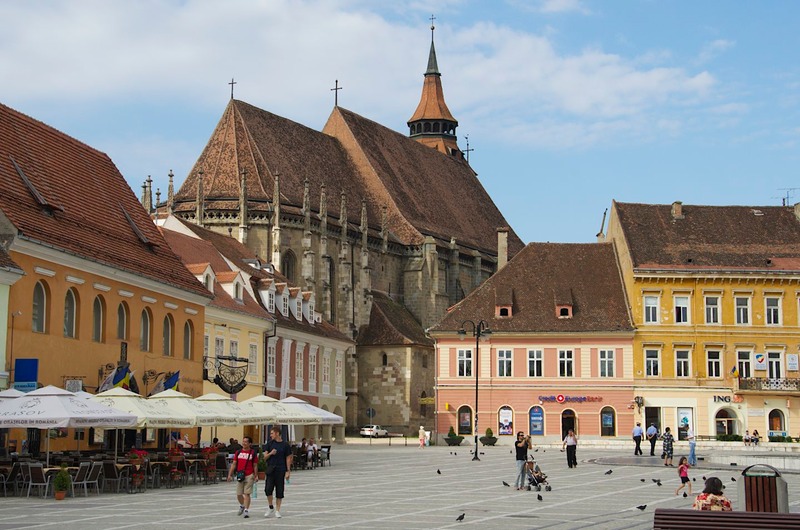
Which isn’t to say that we’ve not enjoyed visiting the cities as well. Braşov, Alba Iulia, Sibiu, Sighisoara – they’ve all gotten plenty of our attention. We decided to skip Bucharest; couldn’t find enough things there of interest; otherwise we think we got to them all. Braşov was one of our favorites. We spent lots of time there, wandering the old city streets, having dinner al fresco at one of the sidewalk restaurants, and attending a very good performance of Brahms’ Deutsches Requiem in the Black Church, which was begun in 1383. (Why “black”? Because the Austrian army, in 1689, started a great fire in the church, leaving the walls totally blackened. Typical occupying-army dolts.)
But for us Romania will always be the countryside. It’s filled with ancient churches, which became the raison d’être for setting our route as we wandered. Last year we spent about 10 days in the far north, up in the shadow of Ukraine, seeing the exquisite wooden churches of Maramureş and the old painted monasteries of Moldavia. This summer we’ve been following the route of the fortified churches that cover much of Transylvania (the region which covers most of the large center portion of Romania) – and we’ve managed to encounter 14 of them, many of which are recognized as World Heritage Sites. These fortified churches are rather unique in Europe. They are Saxon in origin and go back to the Middle Ages (13th-14th centuries). The townsfolk would rush inside when the invading hordes were near, then stay until the hoopla had ended. They stored foodstuffs and grain there, and in some cases they still do. They were really interesting and are to be found in varying stages of naturalness or restoration.
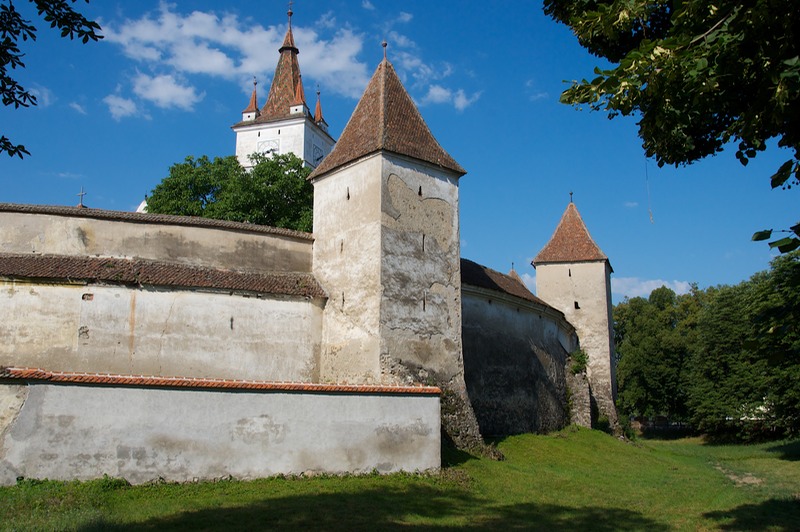
By the time we finished with this project we were glad to be done, but every single visit had been unique and different and really worthwhile. Besides, if Dracula’s Castle doesn’t do it for you, you have to make your own fun!
But it hasn’t all been churches, churches, churches. We hunted down Constantin Brancusi, an internationally famous early 20th century Romanian sculptor; there are several cities with major works of his on display. We were successful in finding really cool outdoor sculptures in various places, including Târgu Jiu, although we were foiled in Craiova because the museum in question was closed for restoration. We had to make do with enjoying the building from the outside, and lovely it was.
We were quite interested in taking in the Maiden Festival, a folk music and traditional dancing gathering in the village of Avram Iancu, in the Apuseni Mountains of western Transylvania. This is a very traditional area, and the costumes were really nifty. We watched the ceremony of the maiden being married, ate local yummies, listened to some music and had a good time. We certainly blew away some of the locals when they realized how far we’d come.
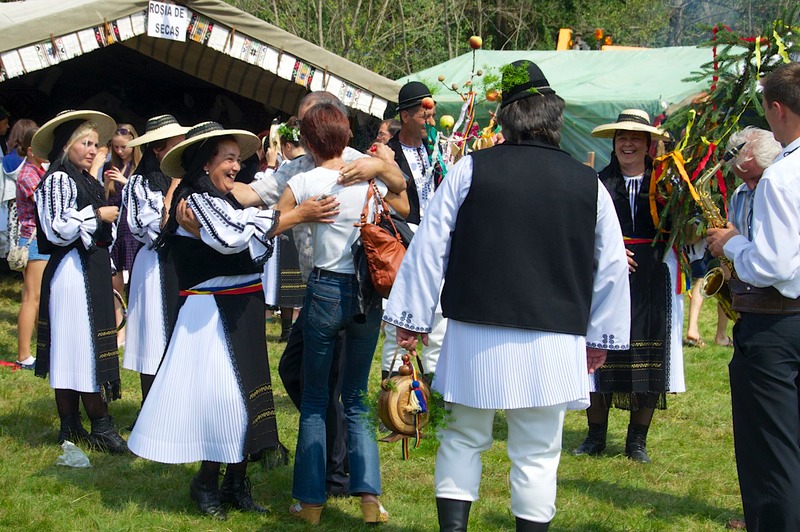
But mostly we wandered, enjoying the distinctly different areas of the country. Romania is not filled with people who all look alike. The histories of the various areas are very different, and the inhabitants look like they have arrived here from all the corners of the world; they speak different languages, and they build very different kinds of structures. Romania has been a punching bag for centuries, and has been occupied by all the usual suspects at one time or another; you can really see it in the faces of those who live there now.
There are many Roma as well, of course. The current thinking is they probably originated in India, many centuries ago, and wandered west. They are strongly associated with Romania, where there are large settlements, many of them movable encampments. They were very different in appearance, both facially and in their dress. They are small people, and to us appeared quite reserved. We shared the countryside with them, and bought berries from them along the roadside.
Our path took us back and forth across the country. It was hot much of the time, so we stayed north of the low-lying plains, which we knew would hold the most heat. In general, we were exploring Transylvania. It contains a series of mountain ranges in a horseshoe shape open to the west (towards Hungary), and with a central plain through the middle. (Another technical description for you to enjoy.) Most of the major cities were in the middle, so we would duck down and enjoy one of them for a couple of days, then trot back up to altitude and cool off again.
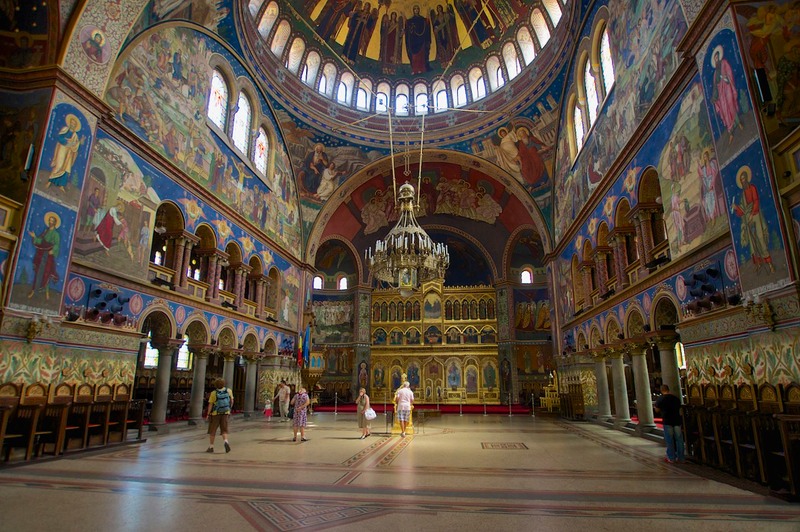
Leaving the Maiden Festival we dropped down out of the mountains to Alba Iulia, an old Hapsburg town with a huge 17th century citadel to enjoy. We investigated the old town inside the walls, spending an interesting Sunday there. Then it was on to Sibiu, another favorite city.
Sibiu was a pretty spot, again with lots of Hapsburg architecture. The city has a strong history of guilds, and they had displays and costuming. The central square was terrific and colorful, full of energy, and used for performances in the summer. As we arrived one Friday afternoon, they were setting up for a dance performance that evening, with these really wacky decorations and huge balls all over the place. It was fun to watch a practice underway. We enjoyed our time in Sibiu so much, several days later we visited again. We’d returned to check out a museum (which turned into a bit of a bore), so mostly enjoyed the passing scene. A real treat was watching a little girl, aided and abetted by her older brother, experience the joy of a regular staple in European cities – fountains on squares that shoot water up out of the ground. She hooted and hollered and danced around; it was wonderful to watch.
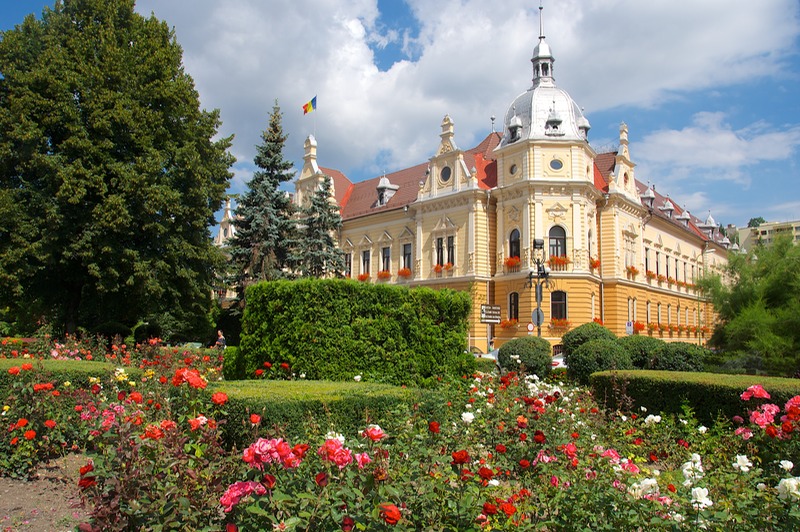
Eventually we beat feet for Braşov, in eastern Transylvania, because our GPS was on the blink and we’d found someone there who’s website said he could fix it (which he actually even did, amazingly). While visiting the city, we spotted a notice for an evening concert a couple of days later and made plans to return. In the interim, we explored the nearby area, spending one night parked next to the very interesting church at Prejmer, a World Heritage Site. We had a good visit, but just as much fun was having a fellow pull up beside us. He was driving a bright red car that said Let’s Pizza! on it. He was drumming up business for his new enterprise and we arranged for him to come back in a couple of hours with dinner – which, in the event, was delicious. If you get to Prejmer, look for him! He knows his pizza, that’s for sure!
Braşov is very near Bran, home of Dracula’s Castle – or at least so the tourist hype says. Apparently Dracula (aka: Vlad the Impaler) never had any connection with the place, but it’s high on a hill, photographs well, and has bunches of folks climbing up to see it. We wended our way through the crowds and headed out into the countryside again with only a brief photo stop at the side of the road (not wanting to disappoint you).
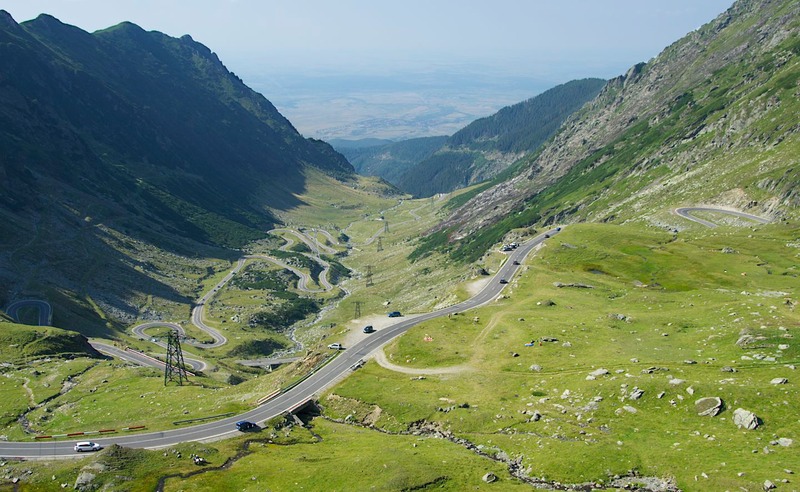
West of Bran is the first in a sequence of three interesting parallel routes through the lovely Carpathian Mountains, all running north-south, which connect the interior of Transylvania with areas further south. We traversed each of the three. The most famous is the Transfăgăraşan Highway. Apparently about 10 years ago some English bloke said it was the best motorbike road in the world. ‘Nuf said; on a weekend in the summer (it happened to be a Sunday when we “trans”-ed it) the road was jammed. Bikes we deal with all the time, but slow moving cars, folks parasailing off the summit, constant junk and food stands, no place to stop and enjoy the view – it was simply a chore, and quite disappointing, though we admit on a quiet day it would make a great ride. It did travel through a pretty area however, and, amazingly enough, as we poked along we suddenly came upon an English couple we’d been chasing for quite awhile. They were parked up in a very pretty spot with a view of the nearby lake – turned out to be by far the nicest spot on the road. We screeched to a halt, introduced ourselves, and spent the next few hours enjoying each other’s company. Ian and Shelagh are great folks and we’re all hoping to be able to get together again down the road.
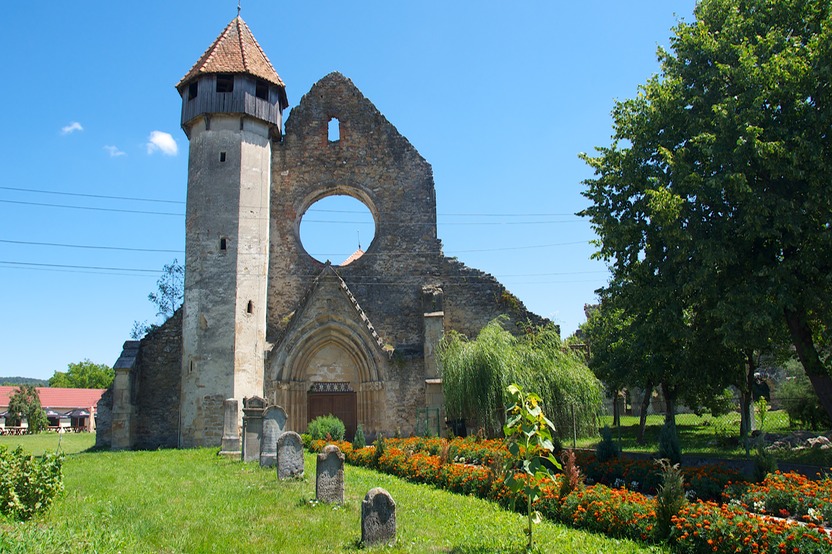
Dropping down off the pass and into the valley, we found a little town, Cârta, that had a tidy little ruin where we spent the night. It was in the 90s, and the heat haze was yucky, but we managed. We had been noticing that every town we passed through still had its supply of storks. This surprised us at first because we thought they should be flying off to their summer homes further north. Silly us; ultimately, we realized that this was their summer home; one day in August, they all started to disappear for the winter. Truly amazing.
The middle one of these north-south highways was boring, although through a lovely low mountain pass. The highway runs between Sibiu and Râmnicu Vâlcea, and follows the River Olt. Full of promise, this road was another disappointment – it’s a major highway now, full of trucks and other traffic, and not very interesting.
But!!! The third highway, the Transalpina road, is brand new in its lower half, very isolated, and marvelously stunning. A real joy. Part of it goes well above tree line (that’s the “alpina” part), there’s little traffic, great views and places to enjoy them, and très super. We found a place to get off the road and out onto a saddle along the spine of the hills, at about 5100 feet. By the time we left, three days had passed. We’d enjoyed visits from horses, mules, and other critters; had been forced to use both blankets and heater in order to be warm enough at night; had been rocked by a violent storm full of both wind and gobs of rain; but we’d enjoyed 3 glorious sunsets and were totally rejuvenated. Yes!!!
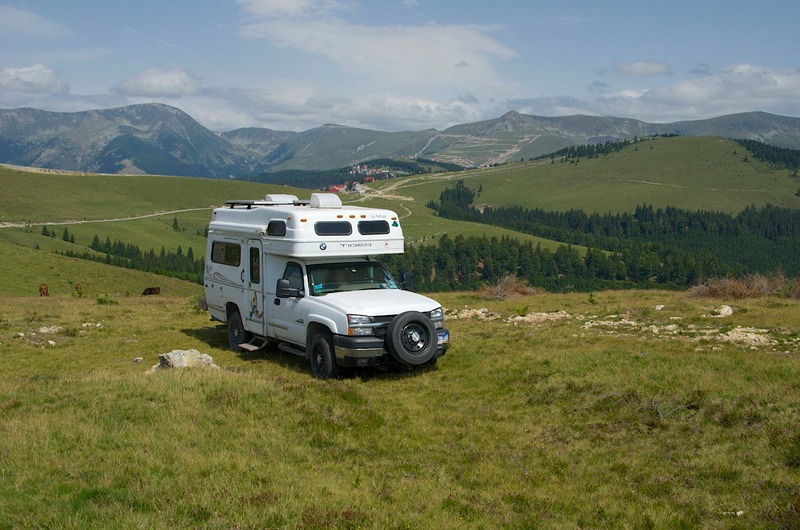
We now were deep in fortified church country. One record-breaking day we stopped and visited 6 of them, each different and more interesting than the last. Many of them are WHS monuments; but those aren’t usually our favorites. Having been “recognized” for their historic value, and restoration money poured into them, often they are just a little too tidy and pretty for our taste. The small, out of the way spots, with tiny buildings that are just that bit scruffy, where the grass needs mowing and the bricks are loose – that’s where we’re the happiest. And we certainly saw lots of them. The book says there were over 300 of them in Romania; lots still survive. We did our best to see what we could.
These small villages are always interesting on their own. Water is still being drawn by bucket from a well, wagons far outnumber automobiles, and there are residents sitting beside the road watching the world go by. In one, Viscri, a local cottage industry of handmade woolen socks is going great guns.
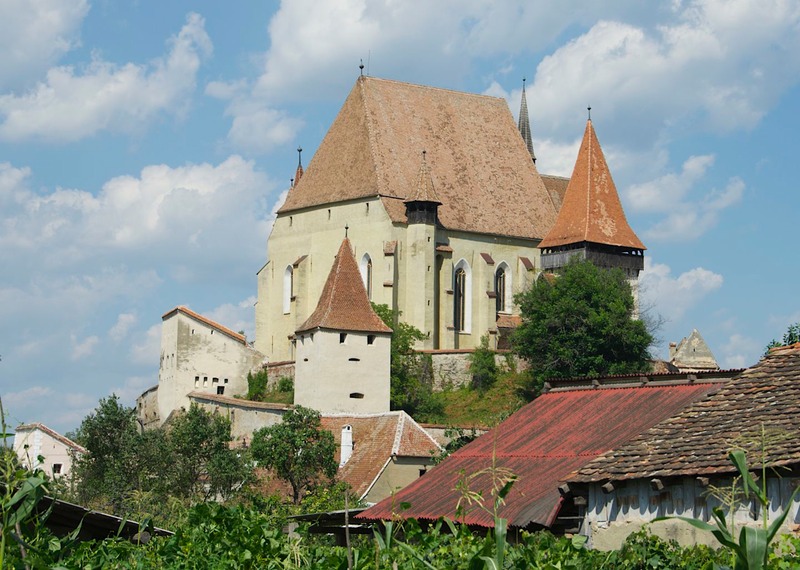
Viscri was extra special in other ways. It was very different inside the church, and reminded me of Scandinavian sites we have visited. Very small, with a rickety balcony (that you were welcome to climb up into), the interior was filled with (also rickety) wooden benches to sit on, hand painted pews with swirly designs, and very charming. Here, as well as in other churches, we were seeing ancient carpets draped over some of the balconies; they were from Turkey, although identified as being “Anatolian.” No surprise, we thought, that Romanians preferred the word Anatolian; generally speaking it’s a euphemism for Turkey but wouldn’t have the stigma of “those nasty Turkish infidels who occupied and murdered us.” (Which, of course they did with great glee throughout the time of the Ottoman Empire.)
At Viscri, we were deep in country settled by Saxons. The lady who was taking a small amount of money at the entrance to the fortified church was different than anyone we’d seen in Romania – she not only looked German, but as if she were descended from the original settlers. It was a fascinating face. I wanted to take her picture, but felt she’d simply be embarrassed, so I let it go. This is a very impressive site. A couple of these Saxon sites we visited were being administered by German folks; we felt pretty sure they were volunteers down to help out in preserving local traditions.
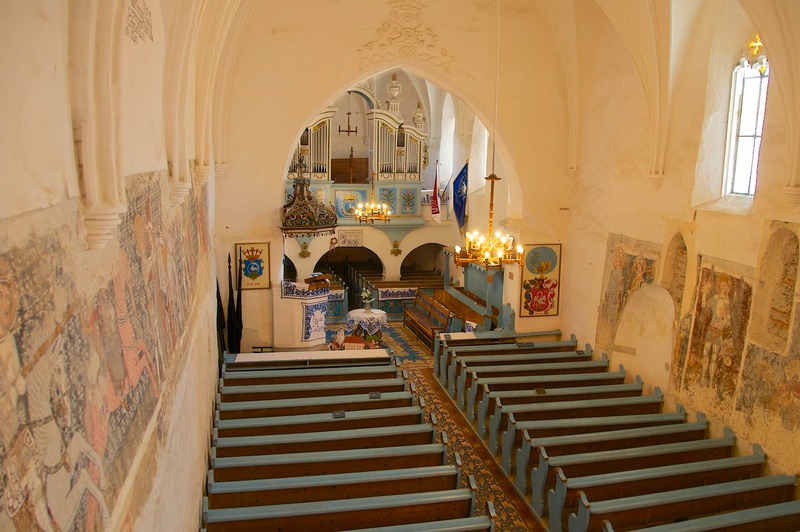
The last of the fortified churches we visited was also quite special. It was in Dârjiu, and the interior had very Hungarian decorative elements. It was painted blue and filled with color – painted wooden panels, white cloth embroidered in many colors, etc. We knew it was Hungarian in style because we were there at the same time as a group of Hungarians – and they said so! It was quite delightful.
We spent that night in the village of Joseni, in the Gheorgheni area. We parked along the square. Church bells chimed every quarter hour, then longer on the hour. The church had two bells, with very different sounds; they seemed to be in competition. Horses pulling carts came by late into the evening, even when it started raining – hard. They were trying to get the hay into the barns. Sometimes the hay was covered, but more likely only the folks riding on top, and often not even them. About 9:00 the rain stopped, and all the teenagers came out into the square to have “their time” -- making the same noises teenagers make everywhere. A girl came riding by, bareback. The church tower said 1787. Just your normal, everyday night in rural Romania.
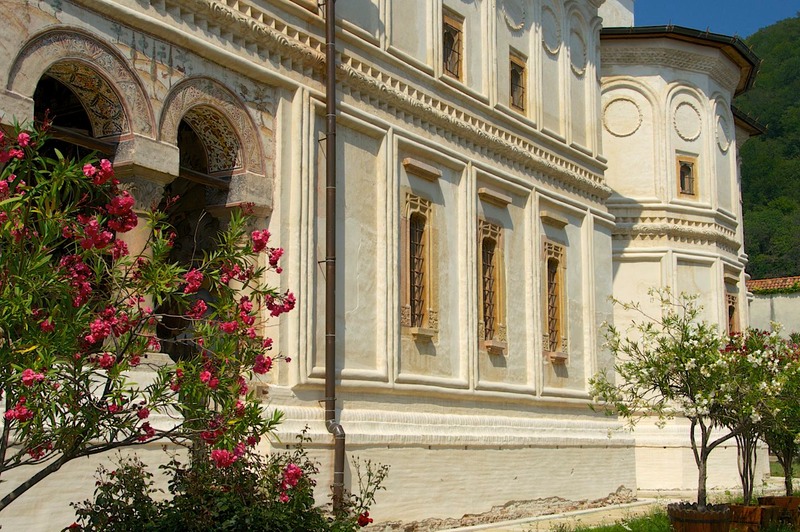
For a long time we’d been seeing signs listing town names in Romanian, German, and Hungarian. Now the German disappeared as we moved further east, into a part of the country without a Saxon heritage.
We started making an exit plan – we were about ready to leave Romania and start moving west. We figured out a nice, leisurely route, seeing some areas we’d not reached yet; then suddenly we needed to speed up and get going. Rick’s computer had died. Research indicated the closest help would be in Germany, either in Dresden or Berlin. Our exit plan had been to (thoroughly) visit Hungary, Slovakia and Poland, and then enter Germany for a couple of weeks, checking out the former GDR and visiting friends. Instead, our quick trip would take us through some of this same area, but on the motorways, at speed, and moving as quickly as possible.
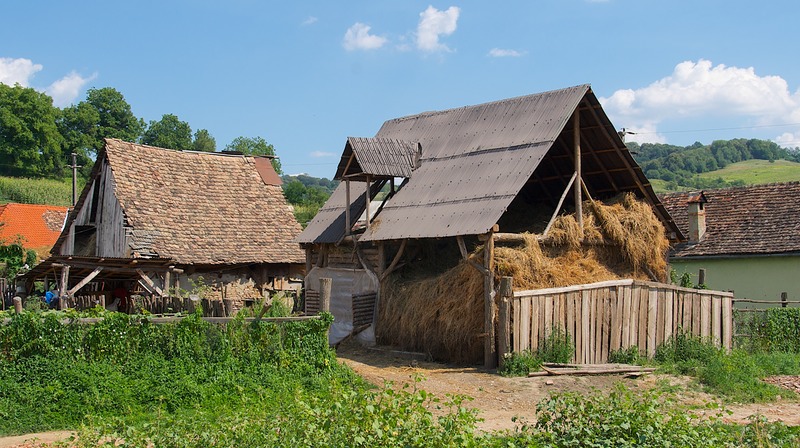
The loss of a computer is not catastrophic. We have two. However, our website works off Rick’s machine and we had just settled in to spend a few days getting this update (that you are finally reading) ready to post. Many other aspects of our normal routine had also disappeared. No surprise to all of you, I’m sure, that a computer that suddenly is non-responsive put us in something of a crisis mode. So, off to Berlin we went. We would simply pick up on our travel itinerary after our “house” was back in order.
In deciding to head for Berlin, we had two sets of friends we would be able to visit. Toni and Berit we’d seen in Konya in the spring, but Jürgen and Yasha were buddies we’d first met in South America, and we were delighted we’d be able to spend time with them at their home north of Berlin. Jürgen had even been able to find an American automotive repair place nearby that would be happy to address some of our ongoing truck issues. Clouds with silver linings!
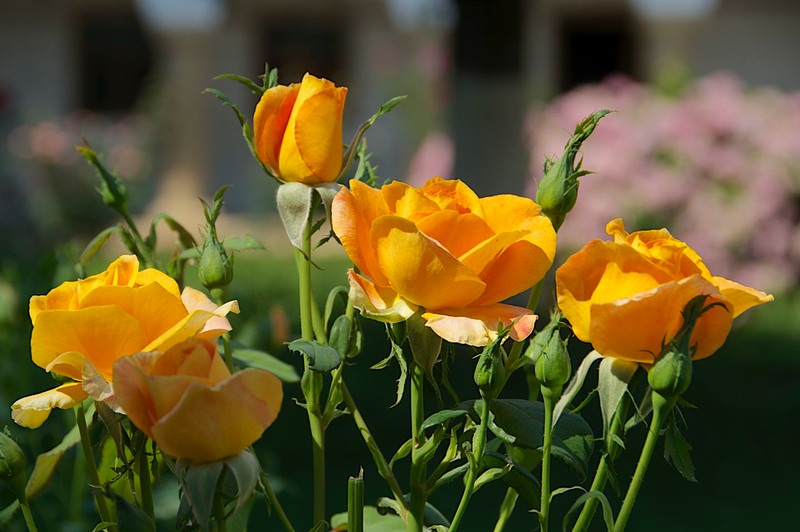
In getting ready to cross the border out of Romania, we realized we were about to leave rural eastern Europe. Even Hungary and Slovakia would be much more westernized, to say nothing of the rest of Europe. We’d been in the east (not only in Europe but in western Asia), enjoying the slower pace and rural beauty, for a total of more than seven months, and we had no plans to return in the future. We were quite sad. No more horse-drawn wagons; no more pigs/sheep/goats/cows in the middle of the road with no intention of hurrying out of your way; no more slow-moving rural life. We were winding up our last dance with an ancient way of life and somewhat reluctantly heading off into more developed and structured areas. Fortunately, we are able to say that we have many fine memories to save from our time here.
Ah, well. We turned, crossed the border into Hungary, entered Schengen territory, and started for Berlin. When you receive this, you’ll know we’ve solved our problems one way or another, and are back on the road.
Auf Wiedersehen!
Rick and Kathy
Click to see more photos from Romania